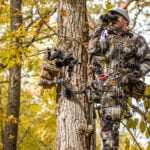I know I’ve already told this story in previous writings, but I’ll never forget the lesson it taught me. I was hunting in the US’s frozen tundra — North Dakota — during December about one week before Christmas in 2006. On the first afternoon, my brother and I saw at least 50 deer, and a beautiful 9-pointer offered me a slam-dunk opportunity. Not only did I shoot too quickly, but the bowstring slapped my coat sleeve when I released, too. The hit was all guts, and I was very disappointed in myself.
After leaving the deer overnight, we easily found him dead in his bed 150 yards away from where I’d arrowed him. Finding him didn’t fix my mistakes, however, which were rushing the shot and allowing bulky clothing to alter my form, ultimately yielding a poor hit that certainly took hours to produce mortality. I was thrilled with my buck, but my poor shot detracted from the experience.
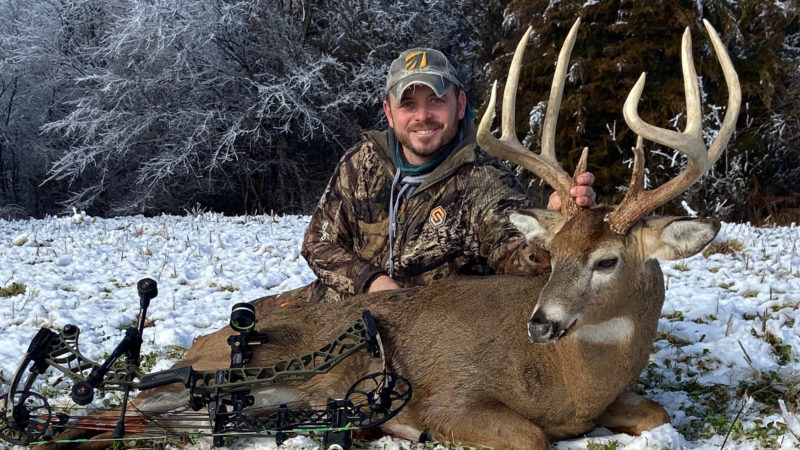
Cold weather during late archery seasons can produce some of the season’s best bowhunting opportunities. Subzero temperatures and the hunting-pressure falloff after the rut and gun seasons, can put magnum bucks on their feet during daylight hours. If you can stay warm enough, there’s still hope for filling your deer tag. But, when it’s freezing cold, will your arrow find its mark?
In the following paragraphs, I’ll address some considerations related to shooting a bow in cold weather. Let’s discuss.
Warm Clothing Can Change Your Form
The first and most obvious way that cold weather can affect your shooting is the clothing you wear, as I found out 15 years ago in North Dakota. My problem then was that my parka wasn’t form-fitting enough to provide bowstring clearance.
Some bowhunters will reduce their bow’s draw length by half an inch or so come late season to allow for a bent elbow, thus increasing clearance. Others might strap on an armguard to shrink the sleeve’s bulk.
Another common problem is restriction in the coat sleeves, especially in the elbows, which can prevent you from naturally reaching your anchor point. This also can lead to bow torque. Expect gloves and a face mask to affect your form and accuracy, too.
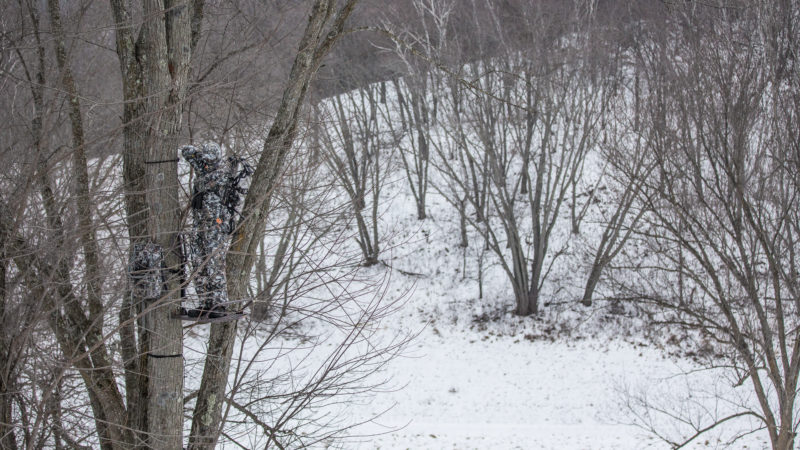
The only way to prepare for this is to suit up in all of your warm gear, then shoot from a hunting-like position, be it from a treestand or ground blind. Try to identify potential problems such as bowstring-to-sleeve contact or inability to anchor properly.
You must ID these things before you go after a cold-weather buck, or you could easily hit a foul ball. This isn’t really related to accuracy, but stiff muscles respond differently, especially when combined with bulky or restrictive clothing. When a buck steps out, you might struggle to draw your bow or fail to reach full draw altogether.
Consider lowering your draw weight if you think this could become an issue. It happened to me in the snow many years ago before I had enough money to buy warm clothes, and it cost me a buck. Do yourself a favor and turn your bow down several pounds so that you can draw it smoothly after hours of inactivity in the cold.
Snow and Ice Build-Up Can Obliterate Accuracy
I learned another tough lesson while stalking mule deer in a snowstorm in 2015. Snow continued building up on my arrow each time I was moving in for a possible shot opportunity. I continually cleaned it off, as it was turning into ice shortly after adhering to the shaft. It also was getting on my arrow rest’s launcher.
Finally, when I got a 20-yard shot on an old buck, I didn’t realize that the rest or arrow had snow on them in the heat of the moment. Thus, I made a very marginal hit easily a foot away from where I’d been aiming. I kept after the buck, made a follow-up hit and recovered him. Again, I was less excited about the outcome because I hadn’t made a double-lung hit on the first shot.
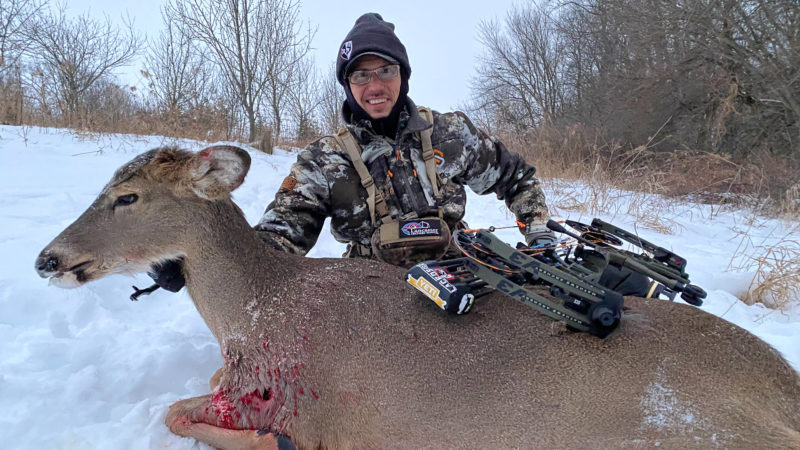
Whether it’s snowing or snow is on the ground, always be attentive to your bow, arrows and accessories. If you set your bow in the snow, look for ice or snow buildup that will potentially affect your arrow flight.
Inspect your arrow rest with a particularly careful eye, as any parts jammed with snow or ice can badly affect arrow flight.
Shoot Your Bow in the Cold
While I’ve never experienced it, some folks find that their bow shoots differently in extremely cold weather than when it was sighted-in during warmer months. If weather changes a muzzleloader’s performance, I believe it can affect bow performance, too.
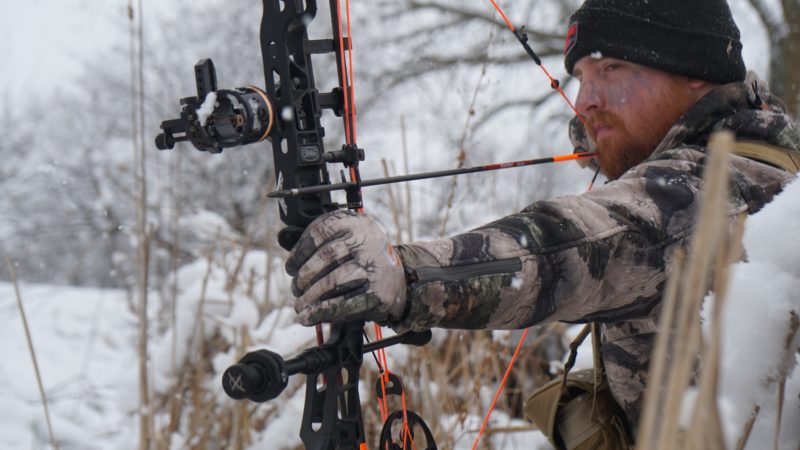
The only way to know is to shoot your bow in cold weather. I don’t believe that subjecting your bow to extreme cold for prolonged periods is wise, but consider leaving your bow and arrows (vanes stiffen in cold weather) in your truck (parked outdoors) overnight and then shooting with it. This is a good test to see how it responds to cold weather.
Clean and Dry Your Bow After the Hunt
Following a snowy hunt, it’s wise to get your bow cleaned off and dried out. Prolonged water beading on the bow and accessories can cause rust, which can lead to pops and squeaks. Dab it off and wipe it down with a towel, then set it in front of a fan to finish drying.
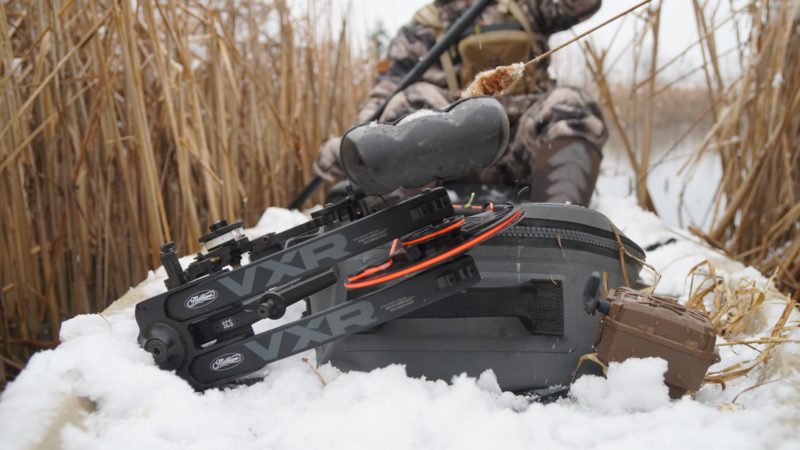
Hunt the Deep Freeze!
If you didn’t notch your tag during the early season or rut, don’t throw the white flag just yet. But, don’t just go hunting without putting some forethought into how your warm clothing and the elements can change the way your bow shoots.
Heed the input outlined above, and you’ll be in good shape when a winter storm puts a buck broadside underneath your stand or in front of your ground blind.

 By
By 
